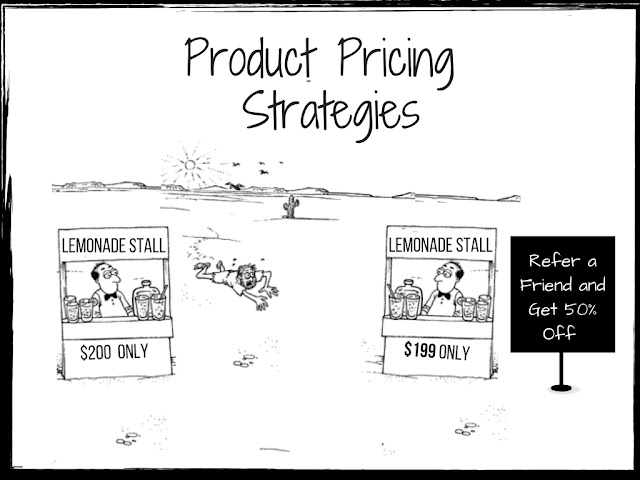5 Proven Product Pricing Strategies for E-commerce Business
There was a time when E-commerce was utilized only by the younger generation of India. But with the easy availability of the internet, online shopping is becoming more prevalent among people of all age groups, thus raising the count of sellers online.
Having an exquisite website isn’t enough to entice the customers. Customers don't hit the purchase button before considering certain features, especially the price of the product. Customers generally ransack the internet for the best deals available for the products which they want to buy.
Though you impart standard products to your customers, there are other competitors who also sell the same quality products at a cheaper rate. This can result in customers switching to your competitors if they feel your product price is higher.
This can put your brand one step behind the other competitors. Certain price comparison platforms make the search process easy, by listing out all the best deals with just a click. This makes it crucial for the e-commerce companies to work on product pricing with utmost priority, in order to survive the tough competition. Let's check out the 5 common strategies for product pricing.
1. Cost-Based Pricing: This is one of the straightforward and conventional methods of product pricing, where the seller fixes the product price based on the amount which he spent to purchase the product, plus the profit margin which he wants on the sales of the product.
Let's take an instance where you are selling a purse online. If the amount for which you buy the purse is $70 and you prefer to get a profit margin of 50%. In such a case you can add your profit margin along with your product price and sell it to the customers at $105.
You need to be very careful while selecting this pricing strategy as you are not including the other charges which are involved in transportation, the cost involved in marketing etc., which can put your business in the loss.
Since this approach is considered as a simpler pricing strategy, it is not suitable for all the products. For example, if you sell products such as furniture, jewelry, etc.., this strategy might not work out as the customers look for quality rather than the pricing. This approach will also not work for products which have high competition and lesser margin price.
2. Value-Based Pricing: Customers are likely to buy a product if they feel that the product is worth paying. Hence it is important to analyze how your product is different from the other brands in the market. For instance, if you are selling a natural organic soap, then the organic ingredient pure Neem is the selling proposition for the soap. Highlighting the selling proposition and availing reasonable pricing for the soap, makes the customers feel they are buying a high-quality product at a cheaper price.
This is considered one of the best pricing strategies where the customers will be paying for the value which the product offers, and on the other hand, you can also make a decent profit out of it. Once you have a regular customer base for the products, gradually increase the price of the product.
3. Psychological Pricing: This is a pricing technique which uses customers emotions to motivate them for a sale. This can be further differentiated into the following:
a. Charm Pricing: This is a tricky way of projecting your product price with the odd numbers, i.e if you are selling a branded watch and if the price of the watch is INR 2000 then portraying it as INR 1999 can stimulate the customers for a purchase than the one with the actual price. The major reason for this is that the human mind perceives 1999 to be cheaper as it seems closer to 1000 than that of 2000. Hence this pricing technique can be used for costly products in order to show it as little cheaper.
b. Rational Pricing: In order to implement this pricing strategy, the products which you sell to must have specifications, for example, If you are an electronic appliance seller, exclusively TV, Then showcasing the unique features of the TV like the LED or LCD, its screen width, warranty period, price,etc can easily attract the customers and make them buy your product irrespective of the rates.
c. Discount Pricing: This is the most popular pricing strategy used especially during the festive season. It involves creating a product price which tantalizes the customers to buy the product with the intention of saving money off discount. One more strategy of pricing is the “Buy one get one free” where you are motivating the customers to buy a product, by tempting them with the free product which they get on the purchase.
4. Customer oriented pricing: To have a good customer oriented pricing, you first need to analyze what is your customer's characteristics, what are they looking for, their purchase behavior, are they satisfied with my products etc.. Once you analyze all these aspects, you can decide on what price to adhere to. But if you are selling a costly product, then keep the cost affordable and do not provide huge discounts. Perhaps, this method is not suitable for customers who are aggressive in rate comparison. Avail discounts, offers and competitive rates for only such customers.
5. Competitive Pricing: As said earlier, a majority of the customers compare the product rates with other vendors online before they purchase any products. Since the customer will be opting between the same product with different cost, they clearly go for the one which is cheaper. This practice of the customer can impact your sales as they may consider your competitor against you only due to the pricing factor. Hence, you need to scrutinize the market value of the product and do competitor analysis to come up with a competitive price. There are some of the competitor analysis tools in the market which can help you to evaluate your competitor's pricing and optimize your pricing to stay ahead of the others.





Comments
Post a Comment